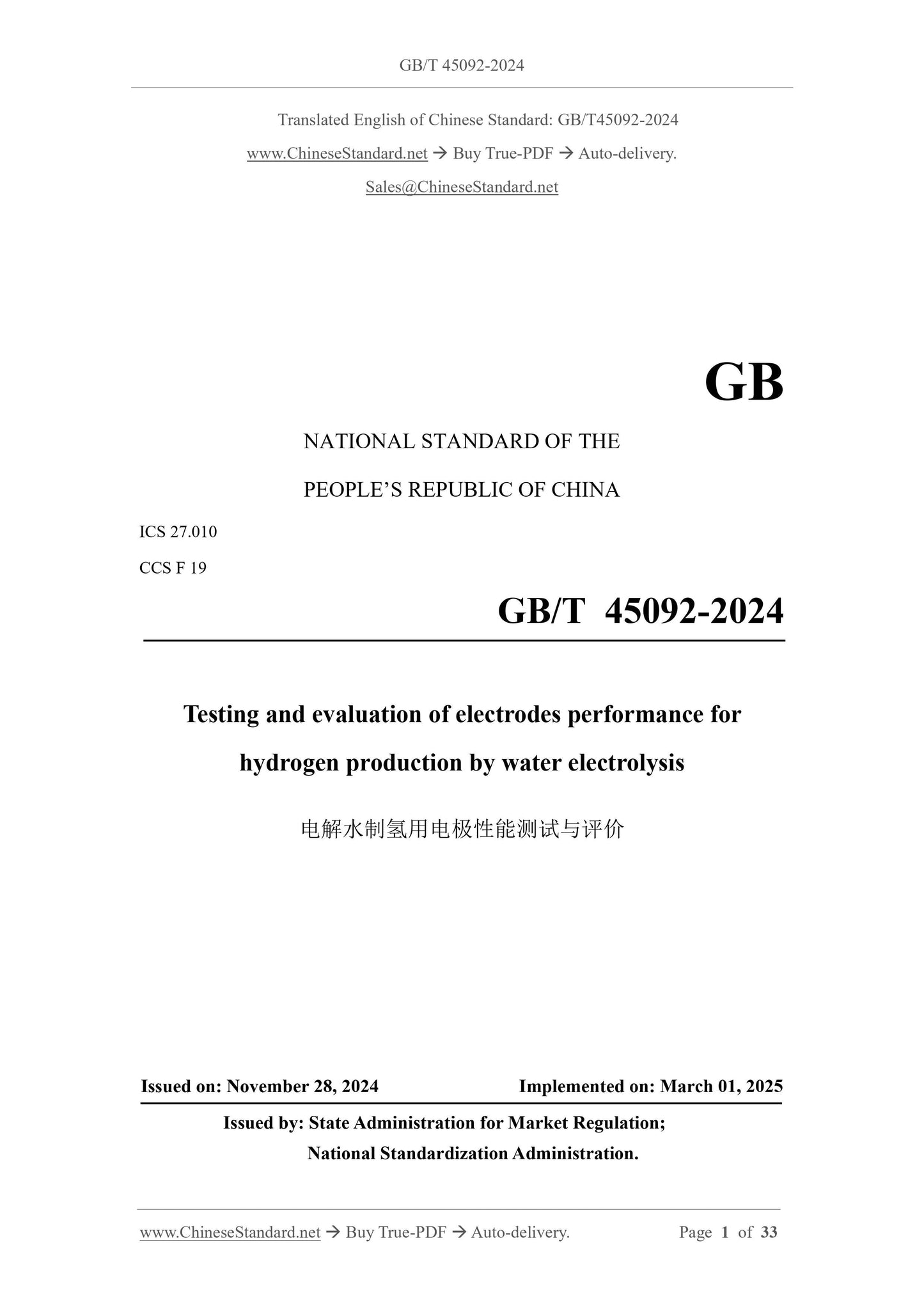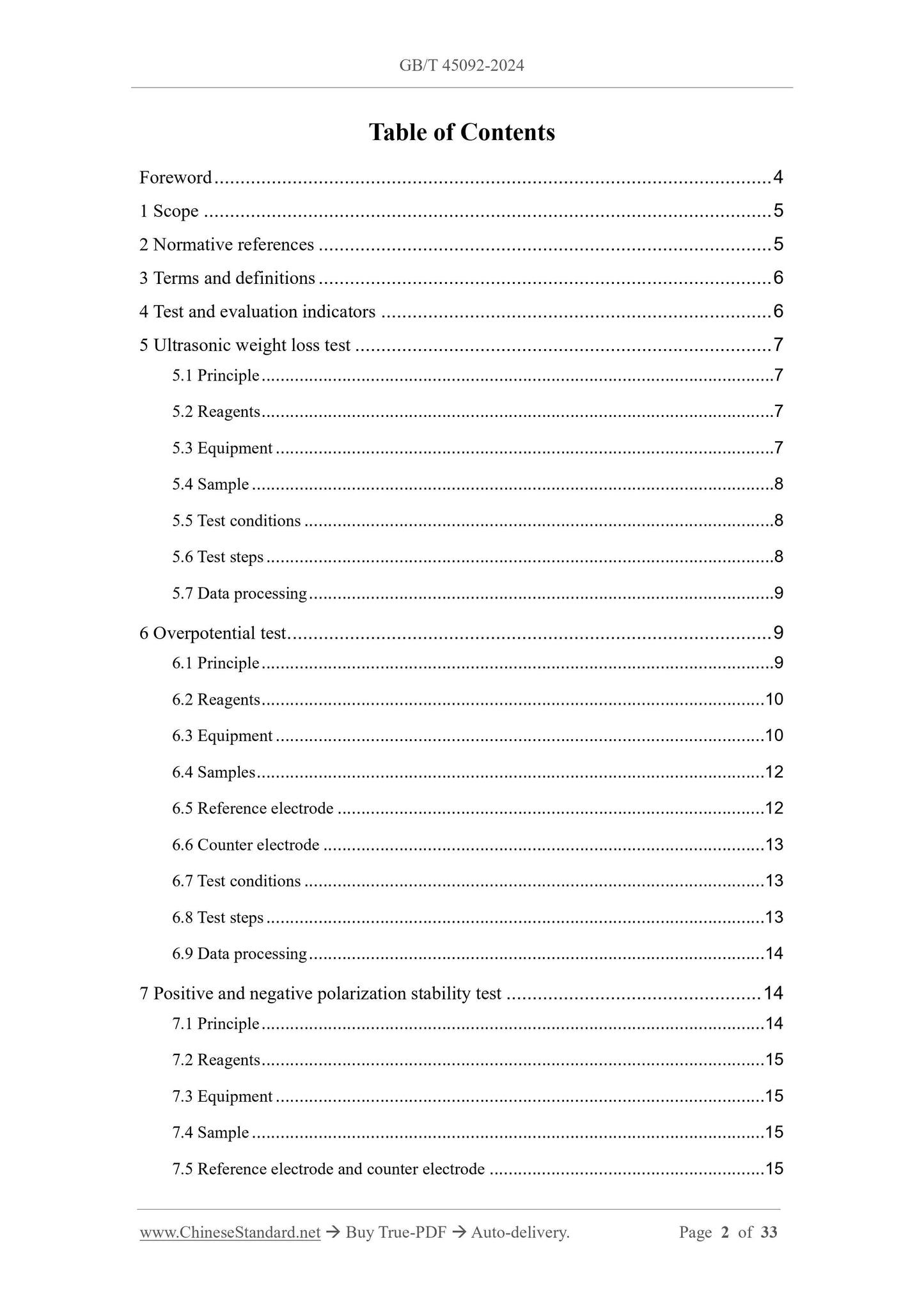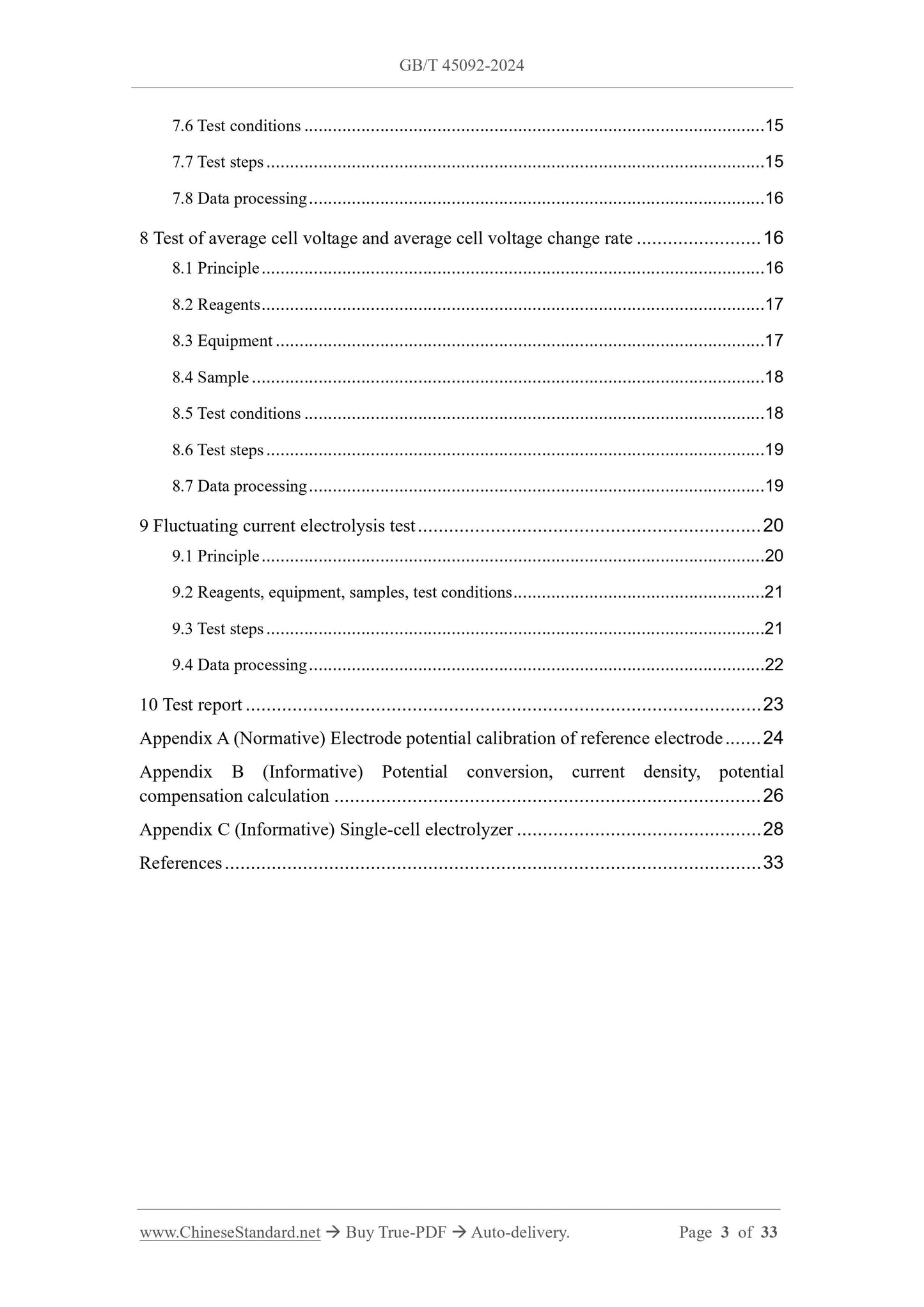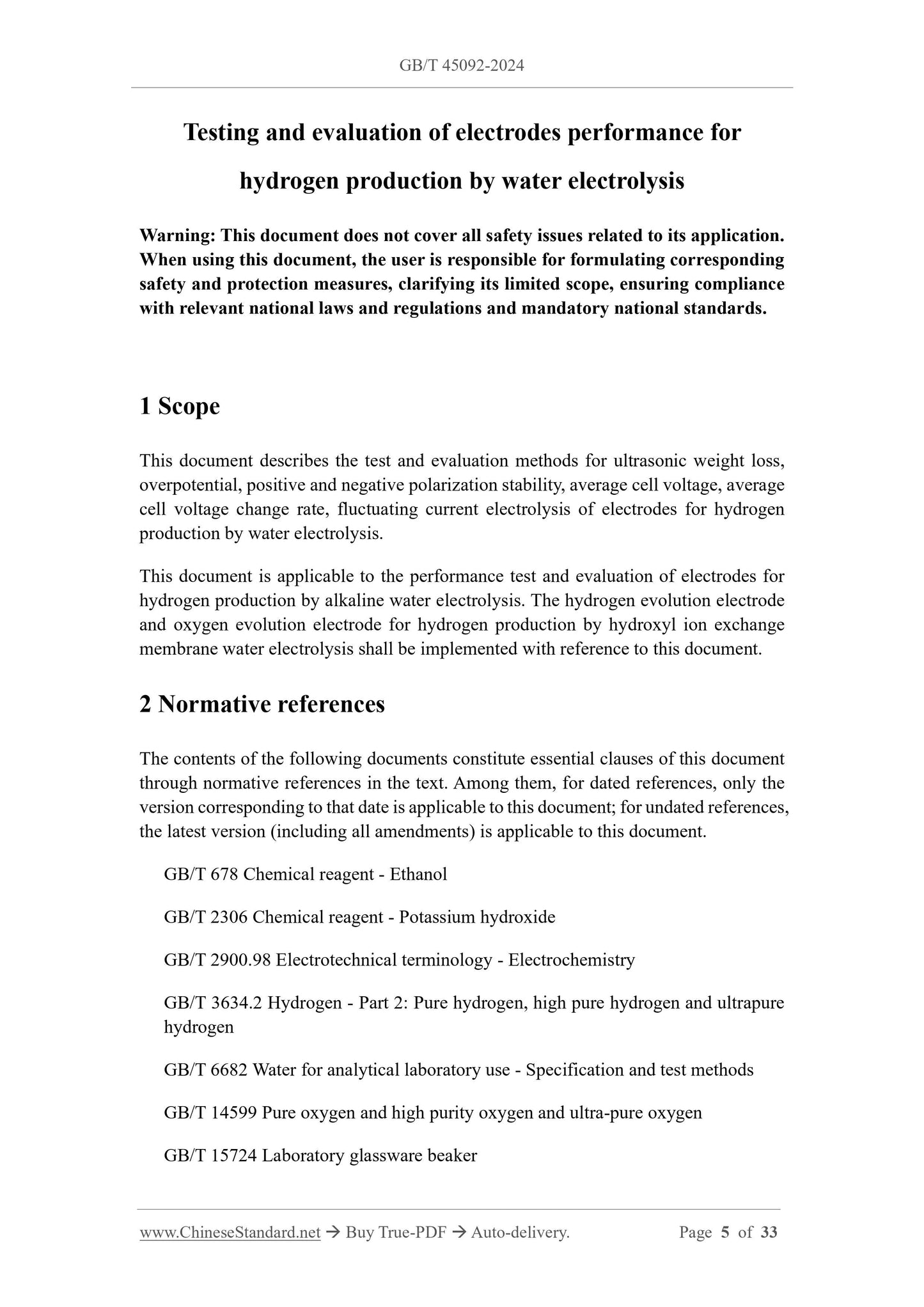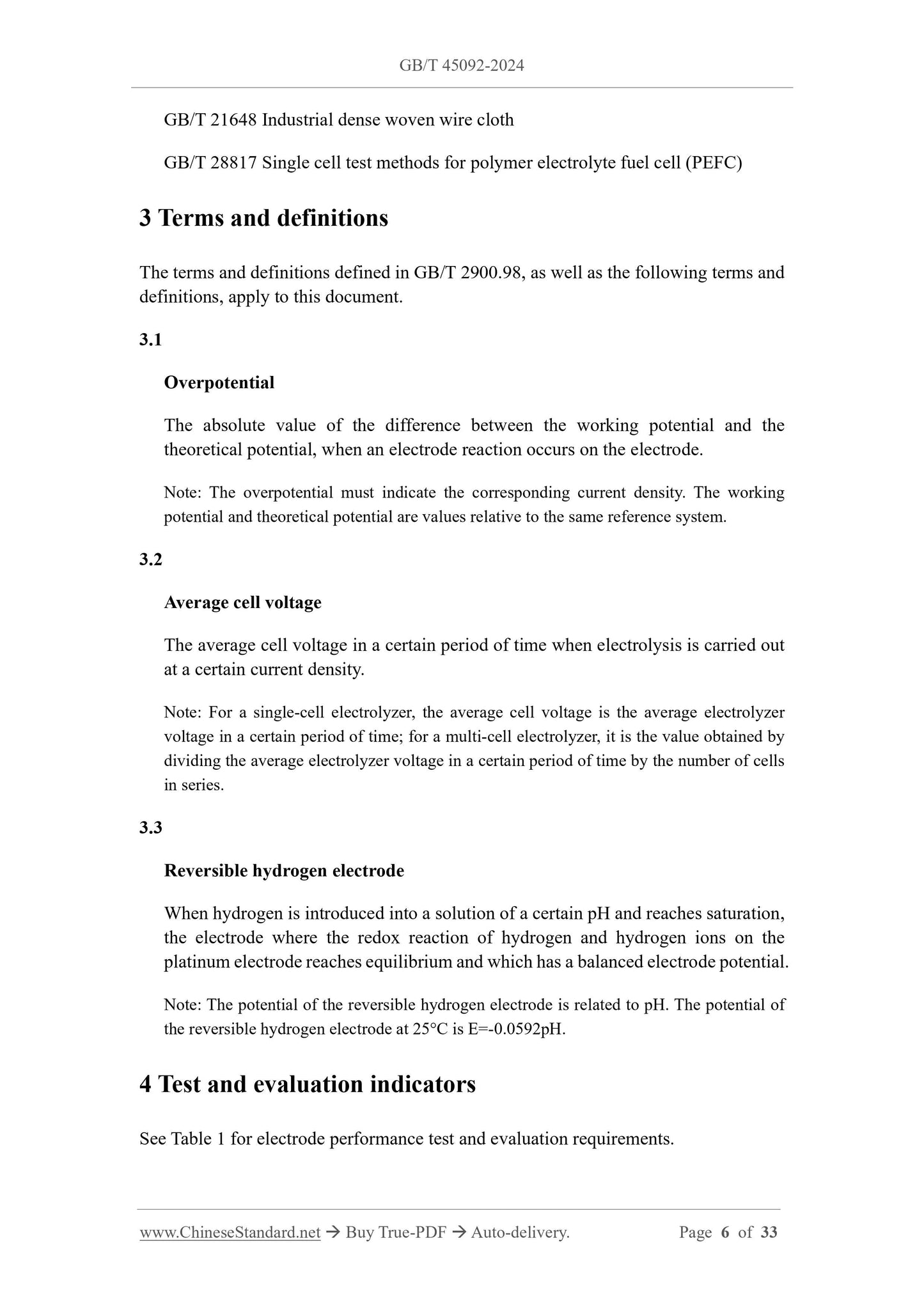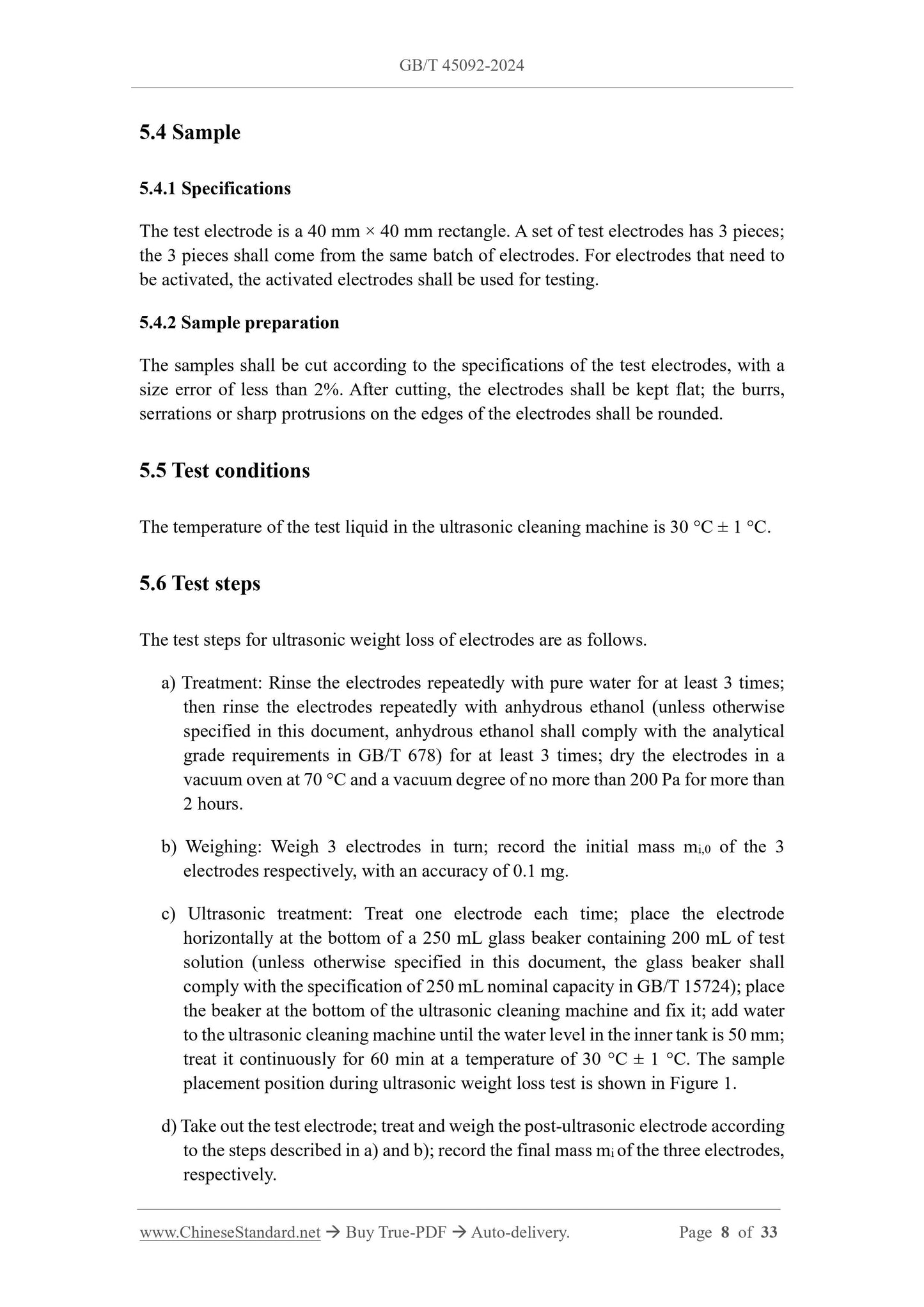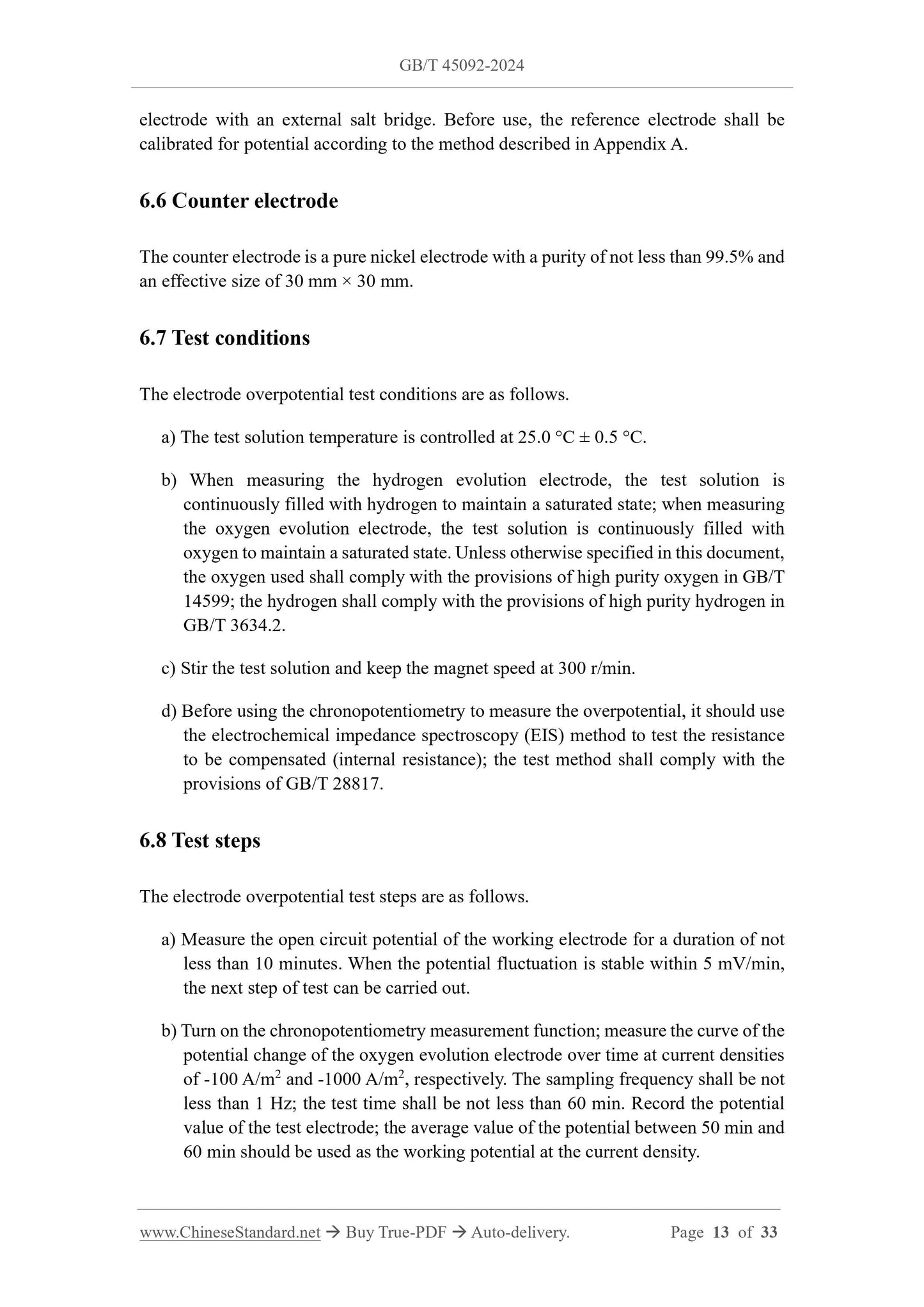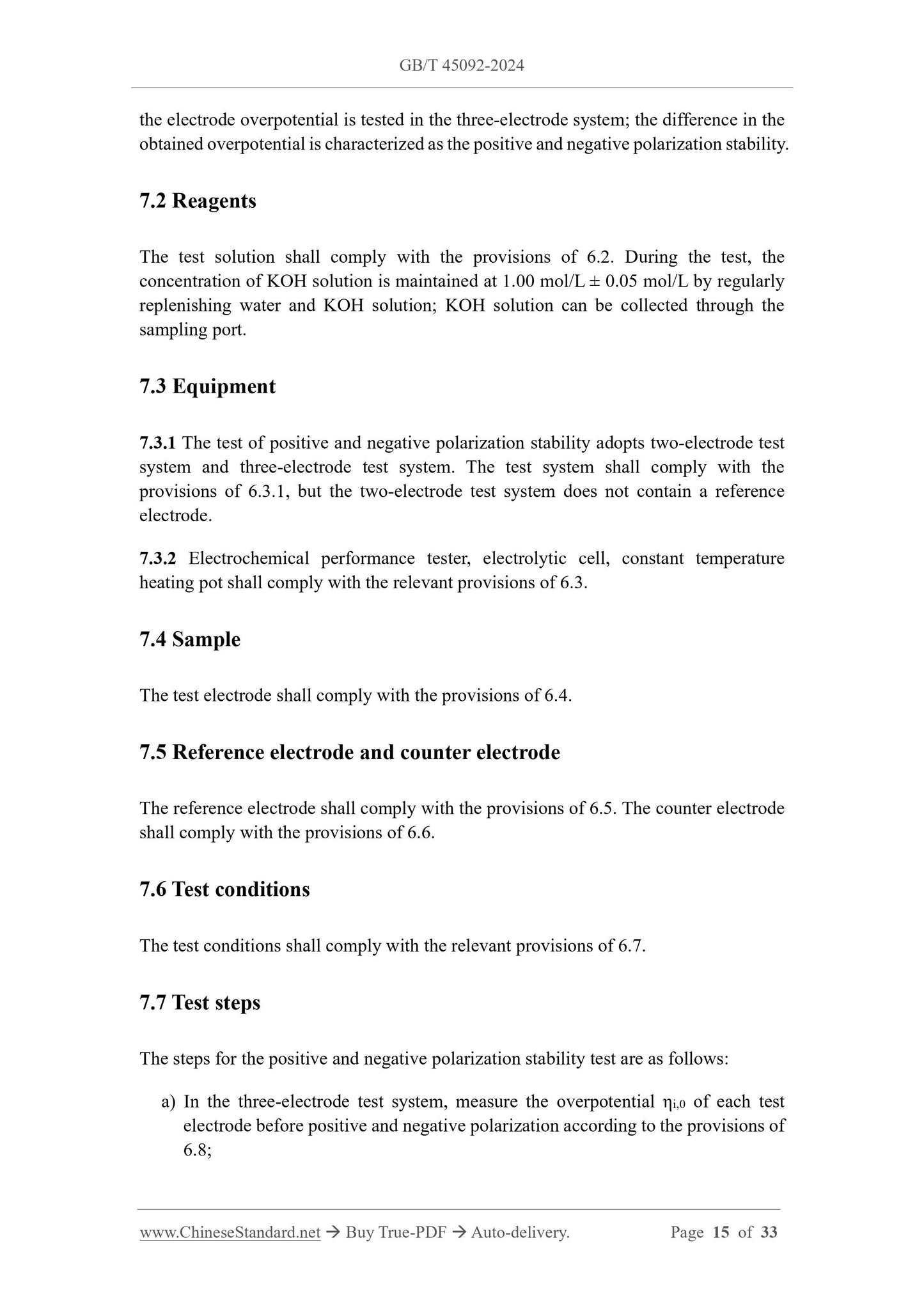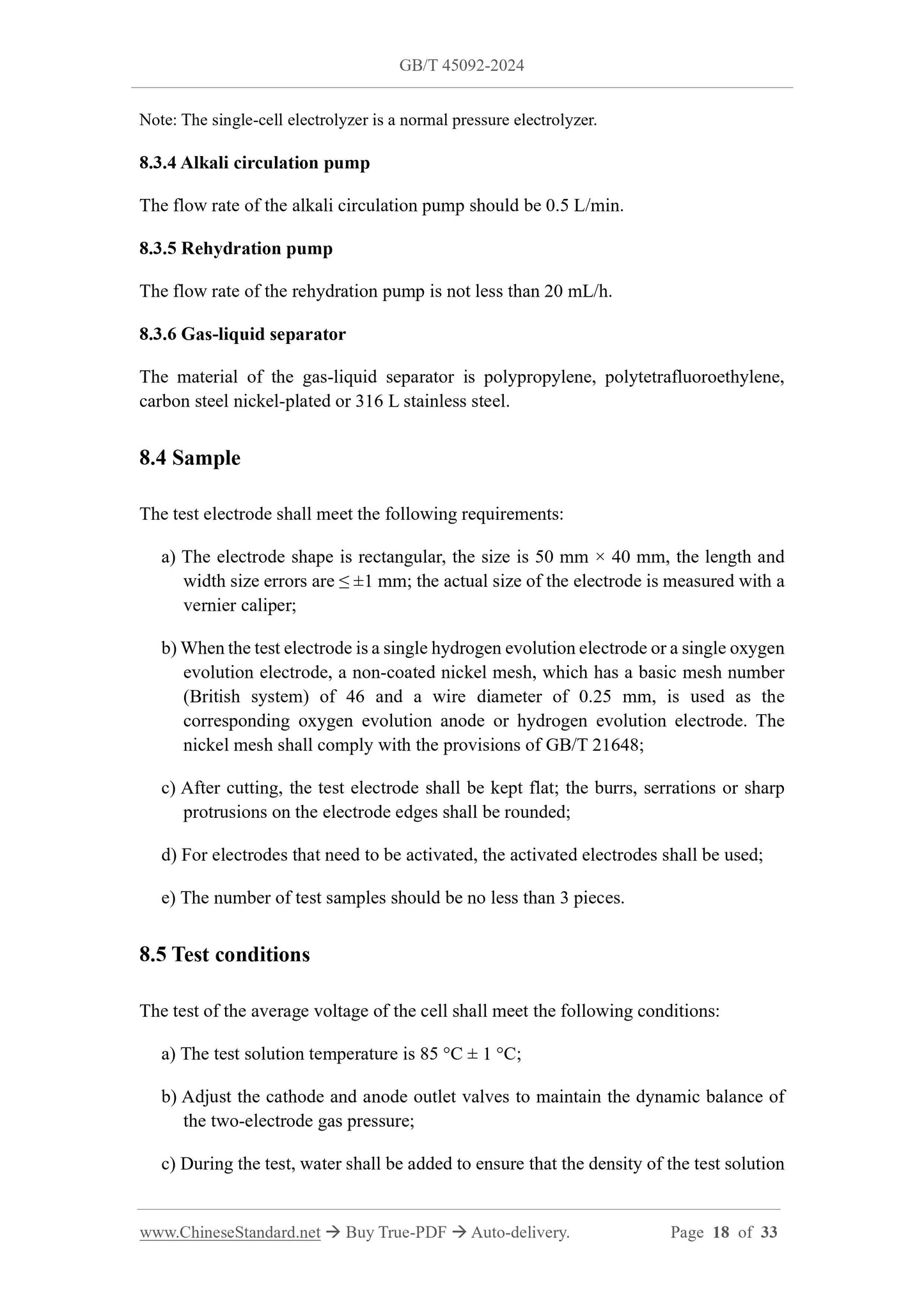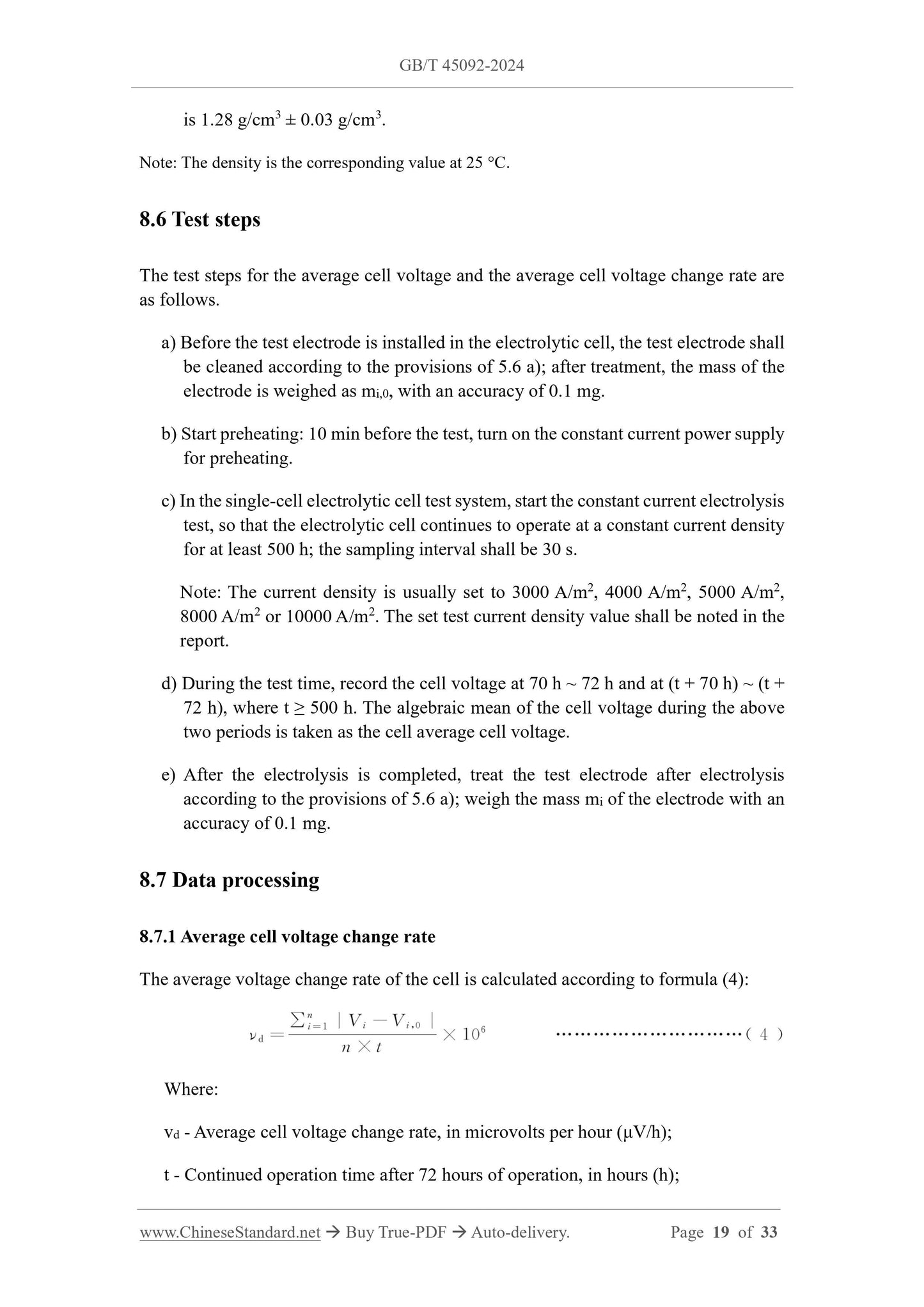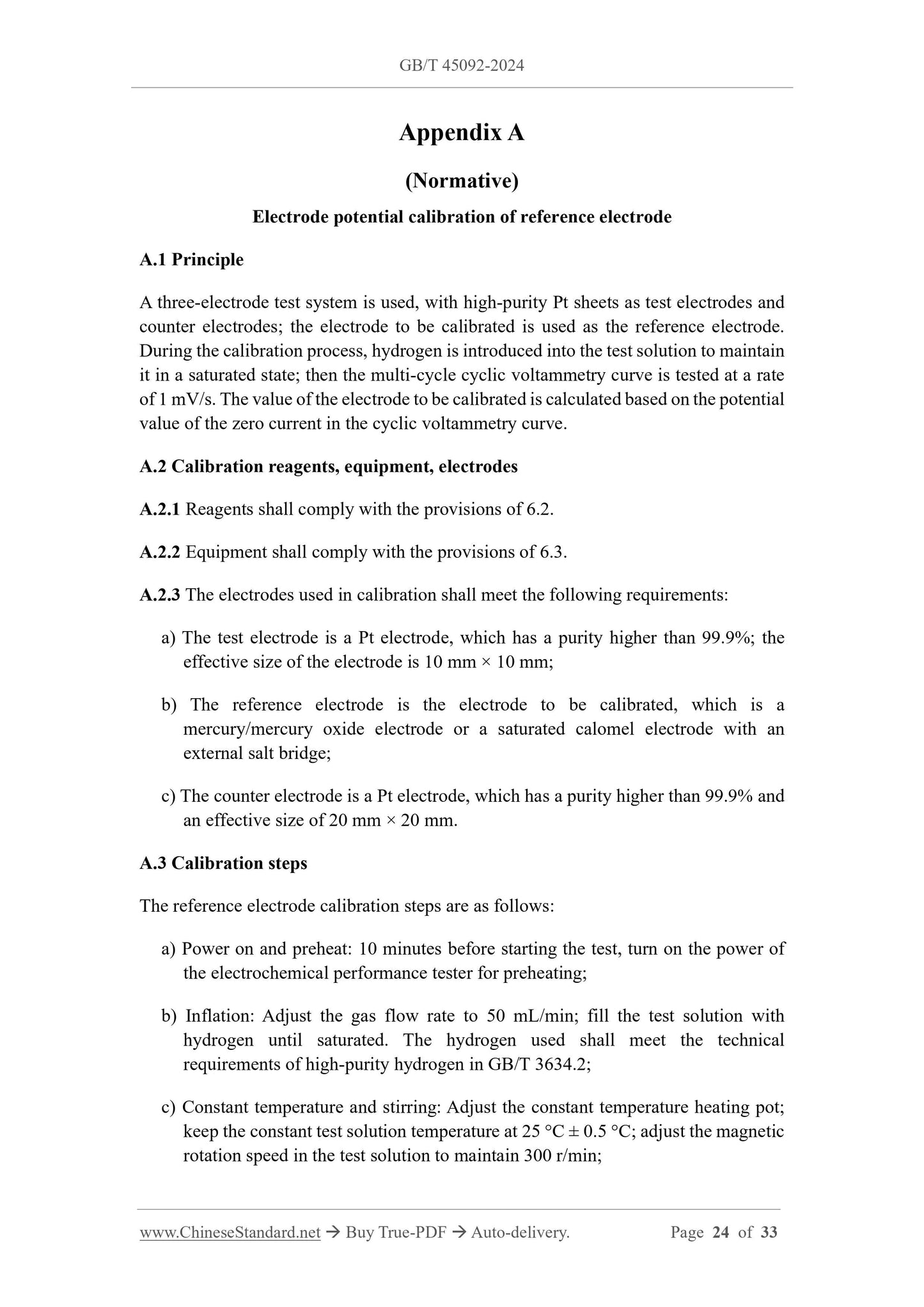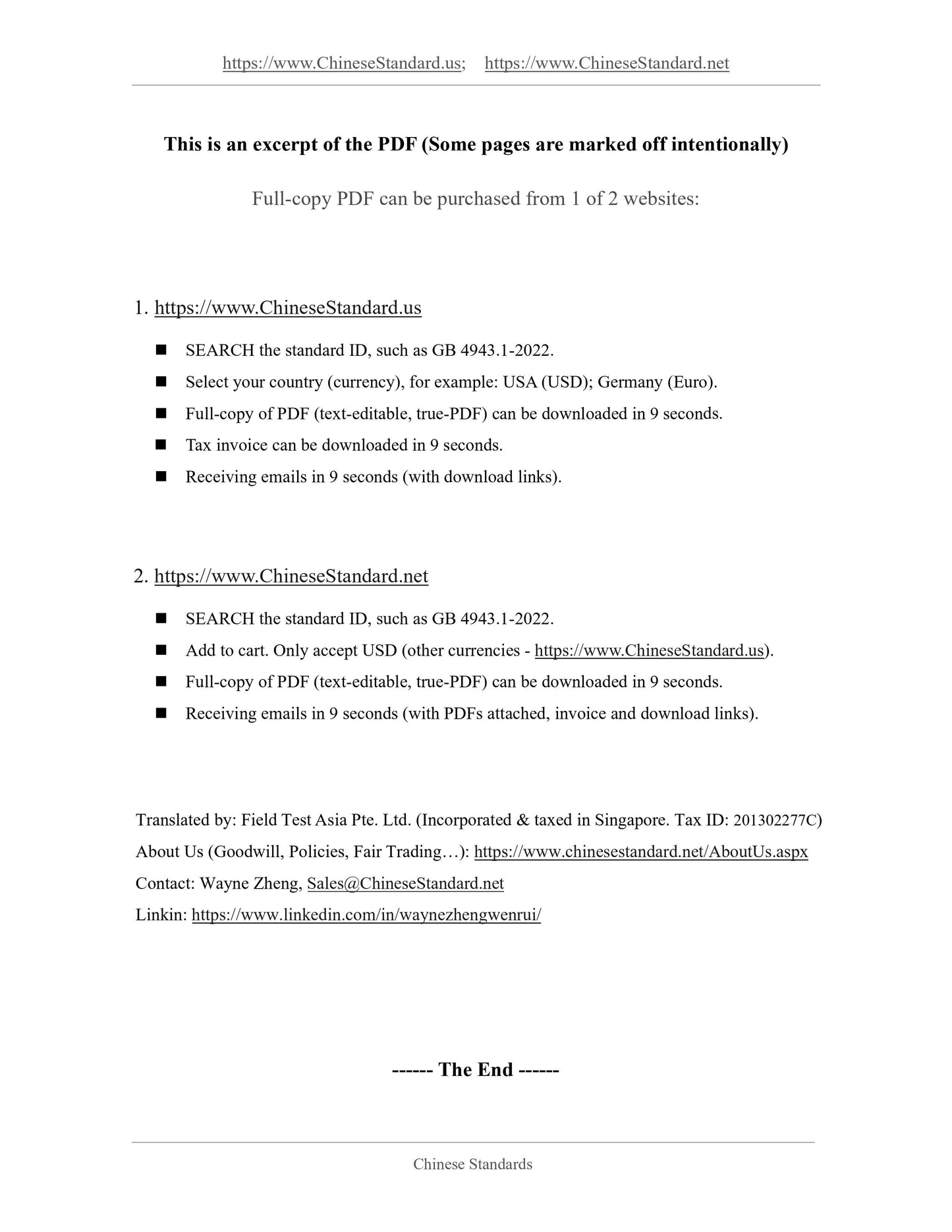1
/
of
12
www.ChineseStandard.us -- Field Test Asia Pte. Ltd.
GB/T 45092-2024 English PDF (GB/T45092-2024)
GB/T 45092-2024 English PDF (GB/T45092-2024)
Regular price
$350.00
Regular price
Sale price
$350.00
Unit price
/
per
Shipping calculated at checkout.
Couldn't load pickup availability
GB/T 45092-2024: Testing and evaluation of electrodes performance for hydrogen production by water electrolysis
Delivery: 9 seconds. Download (and Email) true-PDF + Invoice.Get Quotation: Click GB/T 45092-2024 (Self-service in 1-minute)
Newer / historical versions: GB/T 45092-2024
Preview True-PDF
Scope
This document describes the test and evaluation methods for ultrasonic weight loss,overpotential, positive and negative polarization stability, average cell voltage, average
cell voltage change rate, fluctuating current electrolysis of electrodes for hydrogen
production by water electrolysis.
This document is applicable to the performance test and evaluation of electrodes for
hydrogen production by alkaline water electrolysis. The hydrogen evolution electrode
and oxygen evolution electrode for hydrogen production by hydroxyl ion exchange
membrane water electrolysis shall be implemented with reference to this document.
Basic Data
| Standard ID | GB/T 45092-2024 (GB/T45092-2024) |
| Description (Translated English) | Testing and evaluation of electrodes performance for hydrogen production by water electrolysis |
| Sector / Industry | National Standard (Recommended) |
| Classification of Chinese Standard | F19 |
| Classification of International Standard | 27.010 |
| Word Count Estimation | 26,240 |
| Date of Issue | 2024-11-28 |
| Date of Implementation | 2025-03-01 |
| Issuing agency(ies) | State Administration for Market Regulation, China National Standardization Administration |
Share
